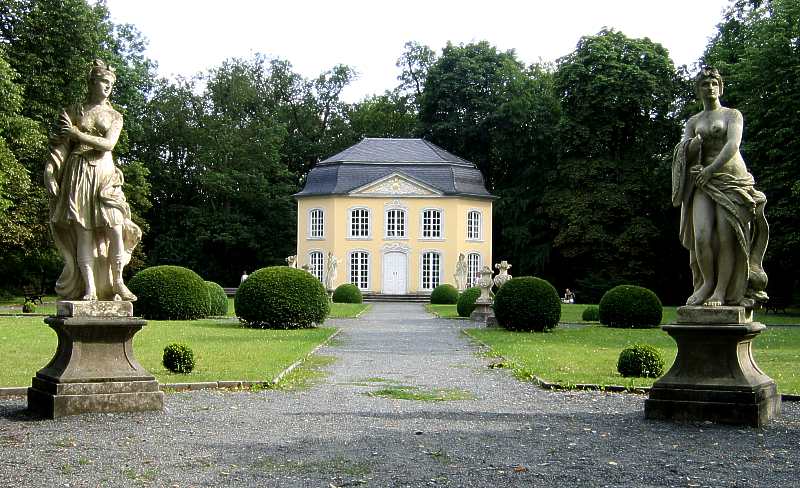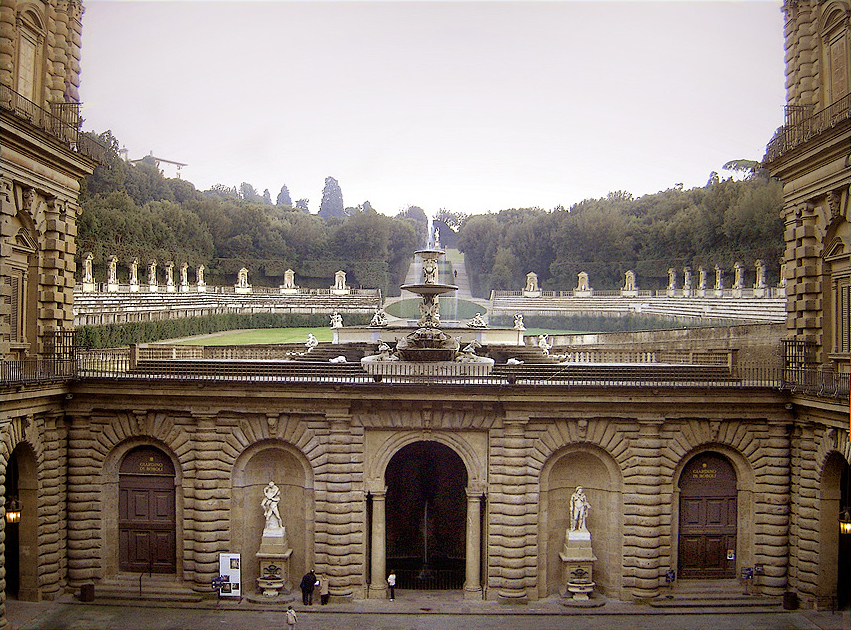|
Fonte Di Fata Morgana
The Fonte della Fata Morgana (''Fountain of Fata Morgana''), locally also called '" Casina delle Fate" (''Little Fairy House''), at Grassina, is a small garden building located not far from Florence, Italy, in the comune of Bagno a Ripoli. It was built in 1573–74 as a garden feature in the extensive grounds of the Villa il Riposo of Bernardo Vecchietti on the slope of the hill called ''Fattucchia''. It is among that group of artificial garden grottoes and nympheums made for private gardens, and less well known than those in the Boboli Gardens or the Medici The House of Medici ( , ) was an Italian banking family and political dynasty that first began to gather prominence under Cosimo de' Medici, in the Republic of Florence during the first half of the 15th century. The family originated in the Mu ... villa at Pratolino. The ''Fonte della Fata Morgana'' at one time was enriched by sculptures, including one by Giambologna. Recently acquired by the Comune di Bagno a Ripo ... [...More Info...] [...Related Items...] OR: [Wikipedia] [Google] [Baidu] |
Fonte Della Fata Morgana, Esterno 00,0
Fonte means ''fountain'', ''source'' and/or ''spring'' in several languages, and is thus present in many toponyms and titles. It may also refer to: People * Allison Fonte (born 1964), American actress and pianist * Artur Fonte (born 1959), Portuguese football player * Bartholomew de Fonte, Spanish admiral involved in the early knowledge of the Pacific Northwest * César Fonte (born 1986), Portuguese cyclist * Emanuele Fonte (born 1992), Italian football player * Francesco Fonte (born 1965), Italian football player * Jeanne de la Fonte, birth name of Renée Adorée (1898–1933), French actress * John Fonte, philosopher involved in transnational progressivism * José Fonte (born 1983), Portuguese football player * Marcello Fonte (born 1978), Italian actor * Maria Inês Fonte (born 2002), Portuguese tennis player * Mike da Fonte (born 1991), American football player * Moderata Fonte (1555–1592), Venetian writer and poet * Pedro José de Fonte y Hernández Miravete (1777– ... [...More Info...] [...Related Items...] OR: [Wikipedia] [Google] [Baidu] |
Casina (architecture)
In architecture, ''pavilion'' has several meanings: * It may be a subsidiary building that is either positioned separately or as an attachment to a main building. Often it is associated with pleasure. In palaces and traditional mansions of Asia, there may be pavilions that are either freestanding or connected by covered walkways, as in the Forbidden City ( Chinese pavilions), Topkapi Palace in Istanbul, and in Mughal buildings like the Red Fort. * As part of a large palace, pavilions may be symmetrically placed building ''blocks'' that flank (appear to join) a main building block or the outer ends of wings extending from both sides of a central building block, the ''corps de logis''. Such configurations provide an emphatic visual termination to the composition of a large building, akin to bookends. The word is from French (Old French ) and it meant a small palace, from Latin (accusative of ). In Late Latin and Old French, it meant both ‘butterfly’ and ‘tent’, becaus ... [...More Info...] [...Related Items...] OR: [Wikipedia] [Google] [Baidu] |
Florence
Florence ( ; it, Firenze ) is a city in Central Italy and the capital city of the Tuscany region. It is the most populated city in Tuscany, with 383,083 inhabitants in 2016, and over 1,520,000 in its metropolitan area.Bilancio demografico anno 2013, datISTAT/ref> Florence was a centre of medieval European trade and finance and one of the wealthiest cities of that era. It is considered by many academics to have been the birthplace of the Renaissance, becoming a major artistic, cultural, commercial, political, economic and financial center. During this time, Florence rose to a position of enormous influence in Italy, Europe, and beyond. Its turbulent political history includes periods of rule by the powerful Medici family and numerous religious and republican revolutions. From 1865 to 1871 the city served as the capital of the Kingdom of Italy (established in 1861). The Florentine dialect forms the base of Standard Italian and it became the language of culture throughout Ital ... [...More Info...] [...Related Items...] OR: [Wikipedia] [Google] [Baidu] |
Comune
The (; plural: ) is a local administrative division of Italy, roughly equivalent to a township or municipality. It is the third-level administrative division of Italy, after regions ('' regioni'') and provinces (''province''). The can also have the title of ('city'). Formed ''praeter legem'' according to the principles consolidated in medieval municipalities, the is provided for by art. 114 of the Constitution of Italy. It can be divided into ''frazioni'', which in turn may have limited power due to special elective assemblies. In the autonomous region of the Aosta Valley, a ''comune'' is officially called a ''commune'' in French. Overview The provides essential public services: registry of births and deaths, registry of deeds, and maintenance of local roads and public works. Many have a '' Polizia Comunale'' (communal police), which is responsible for public order duties. The also deal with the definition and compliance with the (general regulator plan), a document ... [...More Info...] [...Related Items...] OR: [Wikipedia] [Google] [Baidu] |
Bagno A Ripoli
Bagno a Ripoli is a ''comune'' (municipality) in the Metropolitan City of Florence in the Italian region Tuscany, located about southeast of Florence. The International School of Florence has its primary school campus in the comune. ." International School of Florence. Retrieved on August 17, 2015. "Junior School (Pre-School to Grade 5) Villa le Tavernule - via del Carota, 23/25 50012 Bagno a Ripoli (FI), Italy" See also *Convento dell'Incontro
Convento dell'Incontro is a Franciscan monastery that sits on the highest hill top south west of Florence in Bagno a Ripoli. It was the site of the Battle of Incontro on 8 August 1944 when the 2nd Battalion Duke ...
[...More Info...] [...Related Items...] OR: [Wikipedia] [Google] [Baidu] |
Villa Il Riposo
A villa is a type of house that was originally an ancient Roman upper class country house. Since its origins in the Roman villa, the idea and function of a villa have evolved considerably. After the fall of the Roman Republic, villas became small farming compounds, which were increasingly fortified in Late Antiquity, sometimes transferred to the Church for reuse as a monastery. Then they gradually re-evolved through the Middle Ages into elegant upper-class country homes. In the Early Modern period, any comfortable detached house with a garden near a city or town was likely to be described as a villa; most survivals have now been engulfed by suburbia. In modern parlance, "villa" can refer to various types and sizes of residences, ranging from the suburban semi-detached double villa to, in some countries, especially around the Mediterranean, residences of above average size in the countryside. Roman Roman villas included: * the ''villa urbana'', a suburban or countr ... [...More Info...] [...Related Items...] OR: [Wikipedia] [Google] [Baidu] |
Bernardo Vecchietti
Bernardo is a given name and less frequently an Italian, Portuguese and Spanish surname. Possibly from the Germanic "Bernhard". Given name People * Bernardo the Japanese (died 1557), early Japanese Christian convert and disciple of Saint Francis Xavier * Bernardo Accolti (1465–1536), Italian poet * Bernardo Bellotto (c. 1721/2-1780), Venetian urban landscape painter and printmaker in etching * Bernardo Bertolucci (born 1940), Italian film director and screenwriter * Bernardo Buontalenti (c. 1531–1608), Italian stage designer, architect, theatrical designer, military engineer and artist * Bernardo Clesio (1484–1539), Italian cardinal, bishop, prince, diplomat, humanist and botanist * Bernardo Corradi (born 1976), Italian footballer * Bernardo Daddi (c. 1280–1348), Italian Renaissance painter * Bernardo Domínguez (born 1979), Spanish footballer known as Bernardo * Bernardo Dovizi (1470–1520), Italian cardinal and comedy writer * Bernardo Espinosa (born 1989), Colo ... [...More Info...] [...Related Items...] OR: [Wikipedia] [Google] [Baidu] |
Grotto
A grotto is a natural or artificial cave used by humans in both modern times and antiquity, and historically or prehistorically. Naturally occurring grottoes are often small caves near water that are usually flooded or often flooded at high tide. Sometimes, artificial grottoes are used as garden features. The '' Grotta Azzurra'' at Capri and the grotto at Tiberius' Villa Jovis in the Bay of Naples are examples of popular natural seashore grottoes. Whether in tidal water or high up in hills, grottoes are generally made up of limestone geology, where the acidity of standing water has dissolved the carbonates in the rock matrix as it passes through what were originally small fissures. Etymology The word ''grotto'' comes from Italian ''grotta'', Vulgar Latin ''grupta'', and Latin ''crypta'' ("a crypt"). It is also related by a historical accident to the word ''grotesque''. In the late 15th century, Romans accidentally unearthed Nero's ''Domus Aurea'' on the Palatine Hill, ... [...More Info...] [...Related Items...] OR: [Wikipedia] [Google] [Baidu] |
Nympheum
A ''nymphaeum'' or ''nymphaion'' ( grc, νυμφαῖον), in ancient Greece and Rome, was a monument consecrated to the nymphs, especially those of springs. These monuments were originally natural grottoes, which tradition assigned as habitations to the local nymphs. They were sometimes so arranged as to furnish a supply of water, as at Pamphylian Side. A nymphaeum dedicated to a local water nymph, Coventina, was built along Hadrian's Wall, in the northernmost reach of the Roman Empire. Subsequently, artificial grottoes took the place of natural ones. Roman period The nymphaeum in Jerash, Jordan (''illustration, above right''), was constructed in 191 AD. The fountain was originally embellished with marble facing on the lower level, painted plaster on the upper level, and topped with a half-dome roof, forming a giant niche. Water cascaded through seven carved lion's heads into small basins on the sidewalk. The nymphaea of the Roman period, which extended the sacral use t ... [...More Info...] [...Related Items...] OR: [Wikipedia] [Google] [Baidu] |
Boboli Gardens
The Boboli Gardens ( it, Giardino di Boboli) is a historical park of the city of Florence that was opened to the public in 1766. Originally designed for the Medici, it represents one of the first and most important examples of the Italian garden, which later served as inspiration for many European courts. The large green area is a real open-air museum with statues of various styles and periods, ancient and Renaissance that are distributed throughout the garden. It also has large fountains and caves, among them the splendid Buontalenti grotto built by the artist, architect, and sculptor Bernardo Buontalenti between 1536 and 1608. History and layout The Gardens, directly behind the Pitti Palace, the main seat of the Medici grand dukes of Tuscany at Florence, are some of the first and most familiar formal 16th-century Italian gardens. The mid-16th-century garden style, as it was developed here, incorporated longer axial developments, wide gravel avenues, a considerable "built" elem ... [...More Info...] [...Related Items...] OR: [Wikipedia] [Google] [Baidu] |
Medici Family
The House of Medici ( , ) was an Italian banking family and political dynasty that first began to gather prominence under Cosimo de' Medici, in the Republic of Florence during the first half of the 15th century. The family originated in the Mugello region of Tuscany, and prospered gradually until it was able to fund the Medici Bank. This bank was the largest in Europe during the 15th century and facilitated the Medicis' rise to political power in Florence, although they officially remained citizens rather than monarchs until the 16th century. The Medici produced four popes of the Catholic Church—Pope Leo X (1513–1521), Pope Clement VII (1523–1534), Pope Pius IV (1559–1565) and Pope Leo XI (1605)—and two queens of France—Catherine de' Medici (1547–1559) and Marie de' Medici (1600–1610). In 1532, the family acquired the hereditary title Duke of Florence. In 1569, the duchy was elevated to the Grand Duchy of Tuscany after territorial expansion. The Medici ruled the ... [...More Info...] [...Related Items...] OR: [Wikipedia] [Google] [Baidu] |




